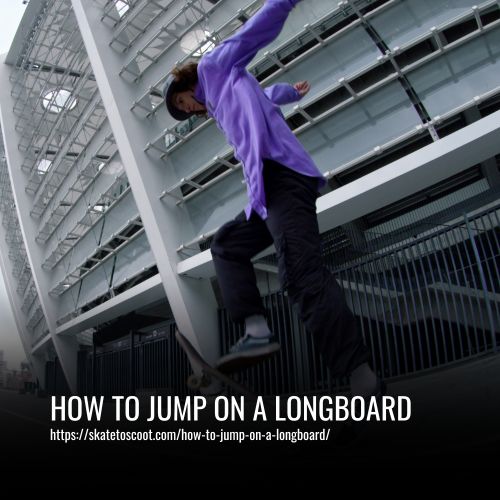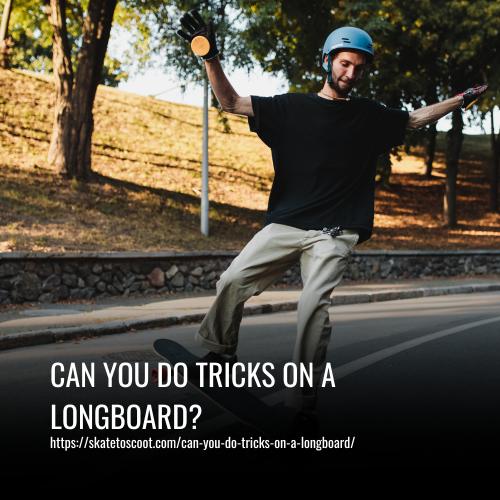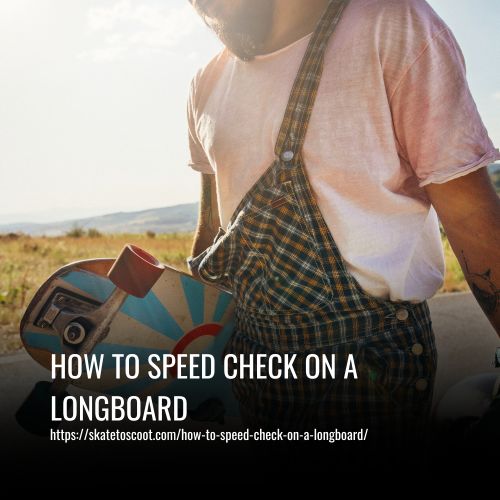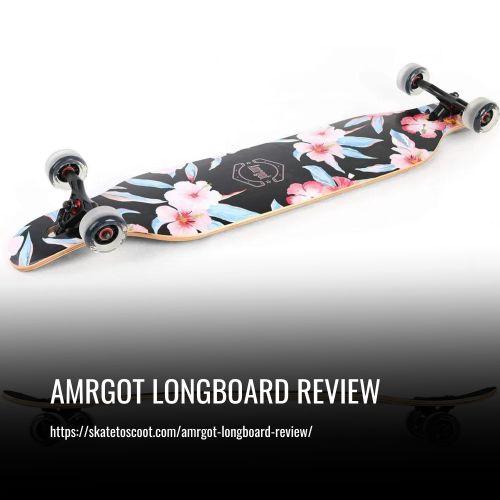As an Amazon Associate we earn from qualifying purchases.
Have you ever watched someone effortlessly glide down the street on a longboard and wondered how they did it? Longboarding may seem intimidating at first, but with the right techniques and practice, anyone can learn how to jump on a longboard and ride with confidence. Whether you’re a beginner or looking to improve your skills, this article will guide you through the steps to successfully jump on a longboard.
Jumping on a longboard adds an extra element of excitement and style to your rides. Not only does it allow you to navigate obstacles and perform tricks, but it also enhances your overall control and balance on the board. By learning the proper techniques and practicing regularly, you’ll be able to jump on your longboard with ease and take your riding to the next level.

Learning The Basics To Jump On A Skateboard
Jumping on a skateboard is an essential skill for any beginner looking to progress in skateboarding. While it may seem intimidating at first, with the right technique and practice, anyone can learn how to jump on a skateboard. Here are the basic steps to get you started:
- Find a good spot: Begin by finding a flat area where you can practice without the board rolling. If you’re a beginner, choose a place where the board will remain still, such as on grass or a carpeted surface.
- Position your feet: Place your front foot near the middle of the board, about two inches from the bolts. Put your back foot on the tail, with the ball of your foot aligned with the center of the board. Both feet should face straight ahead.
- Bend your knees: Bend your knees so that you can both pop the tail and jump up. This will provide the power and momentum needed for the jump.
- Pop the tail: Use your back foot to rapidly and forcefully push down on the tail of the skateboard. This action will cause the board to strike the ground, resulting in upward momentum. Avoid pushing too hard, as it may prevent the board from going up.
- Jump up: Immediately after popping the tail, straighten your legs to jump up into the air. This will elevate the board off the ground.
- Sweep your front foot along the board: As the front end of the board comes up, slide the side of your front foot along the surface of the board. The friction of your foot rubbing against the grip tape will help drag the board upward along with your body.
- Level out: Bring up your back foot and level the board underneath you with your feet as you reach the high point of your jump. You may need to push down slightly on your front foot to get the board level with your shoulders.
- Land: Extend your legs to the ground as you drop, keeping your knees bent to absorb the shock. This is crucial for avoiding injuries and maintaining control of the board.
With practice and consistency, mastering the basics of jumping on a skateboard will open up a world of possibilities for learning more advanced tricks and techniques. So get out there, find a good spot, and start jumping!
Steps To Jumping On A Longboard
Jumping on a longboard is a fundamental skill that allows riders to perform various tricks and maneuvers. By mastering this technique, you can elevate your skateboarding abilities to new heights. In this guide, we will outline the step-by-step process of jumping on a longboard, covering everything from foot placement to landing.
Whether you’re a beginner looking to learn the basics or an experienced rider aiming to add more advanced tricks to your repertoire, these steps will help you achieve fluid motion, maximum height, and control while jumping on a longboard. Are you ready to take your longboarding skills to the next level? Let’s dive into the instructions.
1. Put On Your Helmet And Wrist Guards
Before attempting any tricks on your longboard, it’s essential to prioritize safety. Putting on your helmet and wrist guards is the first step towards protecting yourself from potential injuries. These safety gear items are not only crucial for your overall well-being but also offer a sense of confidence when attempting tricks.
Wearing a helmet safeguards your head and reduces the risk of head trauma in case of a fall or collision. Opt for a helmet specifically designed for skateboarding, ensuring it fits snugly and securely. Additionally, secure your wrists with guards to protect them from sprains or fractures, which are common when attempting tricks.
By wearing a helmet and wrist guards, you can approach tricks with greater confidence, knowing that you have taken measures to minimize the risk of injury. Safety gear not only provides physical protection but also boosts your mental readiness to commit to tricks, enabling you to fully immerse yourself in the joy of longboarding without unnecessary worry.
2. Practice on grass
To practice jumping on a longboard, find a flat area of grass. Start by dragging your board onto the grass and position it in the middle. Stand behind the board and prepare to jump onto it. As you jump, aim to land with your knees bent, absorbing the impact.
Repeat this exercise from different starting positions – behind the board, to the sides, and in front. This variation will help build muscle memory and improve your jump height and direction control.
Although this exercise may initially feel easy, it is crucial for developing the fundamental skills needed for more advanced tricks. Practicing on grass provides a forgiving surface that minimizes the risk of injury while allowing you to focus on refining your technique.
3. Find the smoothest concrete you can
When you’re ready to take your longboarding skills to the next level and start practicing jumping on a moving board, it’s important to find the smoothest concrete surface possible. This will ensure a stable and controlled ride, minimizing the risk of stalling or catching something that could disrupt your jumps.
Before attempting to jump on a moving longboard, make sure the road you’re riding on is free of debris and uneven surfaces. If the road is choppy or has obstacles, there is a higher likelihood that your board might catch something and cause you to lose balance or momentum when you try to jump on. This is something you definitely want to avoid to prevent any accidents or injuries.
By finding the smoothest concrete surface, you give yourself the best chance to perform successful jumps and improve your longboarding skills. So take the time to scout out areas with smooth pavement, such as a skatepark or a well-maintained parking lot, and use these spots as your practice grounds. Remember, a smooth surface is key to maintaining control and stability as you jump on your longboard.
4. Practice more and more
To practice jumping on a moving longboard, it’s essential to gradually increase your skill level and confidence. Start by pushing at a slightly slower speed than your usual cruising speed. This will give you more control and stability when attempting to jump.
Once you’re comfortably cruising at this slower speed, it’s time to jump off the board. Choose a direction that feels most comfortable for you to jump in. As you jump off, make sure to maintain your balance and focus on your body positioning.
After successfully jumping off the board, the next step is to jump back on. Timing is crucial here, so try to time your jump in a way that allows you to land smoothly on the board. Keep your eyes on the board and aim to land with both feet in your original stance position.
Remember, practice makes perfect. The more you practice jumping on a moving longboard, the better you’ll become at it. Start with small jumps and gradually increase the height and complexity of your jumps as you become more comfortable and confident. With time and practice, you’ll be able to execute jumps on a moving longboard with fluidity and ease.
FAQs
To jump on a longboard, start by bending your knees and crouching down. As you pop up, jump off both feet simultaneously, using your upper body to generate upward momentum. Try to keep your board level by keeping your feet parallel to the board. Land with your knees slightly bent to absorb the impact.
To jump higher on a longboard, focus on building leg strength and explosiveness through exercises like squats and plyometrics. Additionally, timing is crucial – try to time your jump as your board reaches the peak of the upward motion.
Yes, foot placement is important for jumping on a longboard. It’s recommended to have your feet positioned in the original stance or slightly wider for stability while jumping. This allows for better control and balance during the jump and landing.
Common challenges include timing your jump with the board’s motion, maintaining balance during the jump, and landing smoothly without losing control. It may take practice to overcome these challenges, so start with small jumps and gradually increase height and difficulty.
Jumping on a longboard can potentially cause damage if not done correctly. It’s important to land with your knees slightly bent to absorb the impact and avoid excessive strain on the board. Regularly check for any signs of damage, such as cracks or delamination, and repair or replace the board if needed.
Conclusion:
Learning how to jump on a longboard can open up a whole new world of excitement and adventure. It’s not just about the tricks and stunts, but also about pushing your limits and conquering your fears. So grab your longboard, find a safe spot, and start practicing.
Before you know it, you’ll be soaring through the air with a smile on your face, feeling the thrill of the jump and the freedom of the ride. Get ready to elevate your longboarding game and experience the true joy of flight!
Amazon and the Amazon logo are trademarks of Amazon.com, Inc, or its affiliates.



